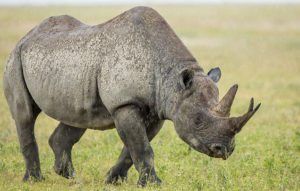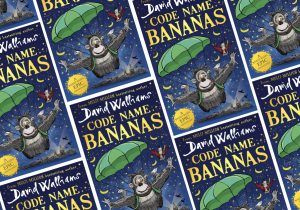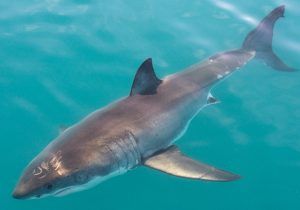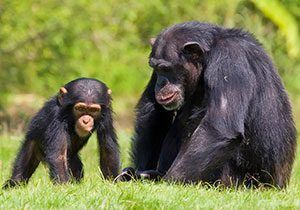
Veggie pasta bake: Measures primary resource
Practise measuring ingredients, counting out quantities and monitoring time this Eat Your Vegetables Day & Father’s Day
This Cooking primary resource gives children an opportunity to practise counting and measuring ingredients, handling different quantities and monitoring time by cooking a vegetable pasta bake.
Pupils will be challenged to measure weight values and use units of measurement in a real world capacity in our National Geographic Kids’ Measures primary resource sheet.
The teaching resource is ideal for use on Eat Your Vegetables Day (17th June) and Father’s Day (18th June). It can be used as a printed handout for instruction in class time, or for display on the interactive whiteboard.
Activity: Before following the cooking instructions in the resource, discuss with children different methods of measurement and show them different ways of measuring out ingredients (e.g. a measuring jug, electronic scales, balance scales, mechanical scales, bowl scales, etc.) Have the children seen or used these types of scale before? Ask the children what units of measure they have heard of (i.e. cm, km, miles, kg, g, lbs, oz, st, tonnes, etc.). Which do they think are the most appropriate for measuring out the ingredients for making a vegetable bake? Ask children to measure out the ingredients on the page and complete the task by following the instructions.
N.B. The following information for mapping the resource documents to the school curriculum is specifically tailored to the English National Curriculum and Scottish Curriculum for Excellence. We are currently working to bring specifically tailored curriculum resource links for our other territories; including South Africa, Australia and New Zealand. If you have any queries about our upcoming curriculum resource links, please email: schools@ngkids.co.uk
This primary resource assists with teaching the following Design and Technology (Cooking and nutrition) objectives from the National Curriculum:
As part of their work with food, pupils should be taught how to cook and apply the principles of nutrition and healthy eating. Instilling a love of cooking in pupils will also open a door to one of the great expressions of human creativity. Learning how to cook is a crucial life skill that enables pupils to feed themselves and others affordably and well, now and in later life.
Key stage 1
Pupils should be taught to:
- use the basic principles of a healthy and varied diet to prepare dishes understand where food comes from.
Key stage 2
- understand and apply the principles of a healthy and varied diet
- prepare and cook a variety of predominantly savoury dishes using a range of cooking techniques
- understand seasonality, and know where and how a variety of ingredients are grown, reared, caught and processed.
This primary resource assists with teaching the following EYFS Mathematics objectives from the National Curriculum:
- Shape, space and measures: children use everyday language to talk about size, weight, capacity, position, distance, time and money to compare quantities and objects and to solve problems.
National Curriculum Lower Key Stage 2 Maths (Year 4) objectives:
Pupils should be taught to:
- convert between different units of measure [for example, kilometre to metre; hour to minute]
National Curriculum Upper Key Stage 2 Maths (Year 5):
Pupils should be taught to:
- convert between different units of metric measure (for example, kilometre and metre; centimetre and metre; centimetre and millimetre; gram and kilogram; litre and millilitre)
- understand and use approximate equivalences between metric units and common imperial units such as inches, pounds and pints
This Food primary resource assists with teaching the following Health and wellbeing Early level objectives from the Scottish Curriculum for Excellence:
- I enjoy eating a diversity of foods in a range of social situations.
- Together we enjoy handling, tasting, talking and learning about different foods, discovering ways in which eating and drinking may help us to grow and keep healthy
- I explore and discover where foods come from as I choose, prepare and taste different foods.
Scottish Curriculum for Excellence First level Health and wellbeing objectives:
- I experience a sense of enjoyment and achievement when preparing simple healthy foods and drinks.
- When preparing and cooking a variety of foods, I am becoming aware of the journeys which foods make from source to consumer, their seasonality, their local availability and their sustainability.
Scottish Curriculum for Excellence Second level Health and wellbeing objectives:
- Through exploration and discussion, I can understand that food practices and preferences are influenced by factors such as food sources, finance, culture and religion.
- When preparing and cooking a variety of foods, I am becoming aware of the journeys which foods make from source to consumer, their seasonality, their local availability and their sustainability.
Scottish Curriculum for Excellence Third level Health and wellbeing objectives:
- By taking part in practical food activities and taking account of current healthy eating advice, I can prepare healthy foods to meet identified needs.
- Through practical activities using different foods and drinks, I can identify key nutrients, their sources and functions, and demonstrate the links between energy, nutrients and health.
- I can apply food safety principles when buying, storing, preparing, cooking and consuming food.
Scottish Curriculum for Excellence Fourth level Health and wellbeing objectives:
- I can apply my knowledge and understanding of nutrition, current healthy eating advice and the needs of different groups in the community when planning, choosing, cooking and evaluating dishes.
- Having identified diet-related conditions, I can adapt and cook recipes to suit individual needs.
This Maths primary resource assists with teaching the following Numeracy and mathematics Early level objectives from the Scottish Curriculum for Excellence:
- I have experimented with everyday items as units of measure to investigate and compare sizes and amounts in my environment, sharing my findings with others.
Scottish Curriculum for Excellence Numeracy and mathematics Second level objectives:
- I can use my knowledge of the sizes of familiar objects or places to assist me when making an estimate of measure
- I can use the common units of measure, convert between related units of the metric system and carry out calculations when solving problems
Scottish Curriculum for Excellence Numeracy and mathematics Third level objectives:
- I can solve practical problems by applying my knowledge of measure, choosing the appropriate units and degree of accuracy for the task and using a formula to calculate area or volume when required
Download primary resource
More Like

Rhino facts!

CODE NAME BANANAS!

10 facts about great white sharks!









LEAVE A COMMENT
THANK YOU
Your comment will be checked and approved shortly.
WELL DONE,
YOUR COMMENT
HAS BEEN ADDED!
COMMENTS
CUSTOMIZE YOUR AVATAR